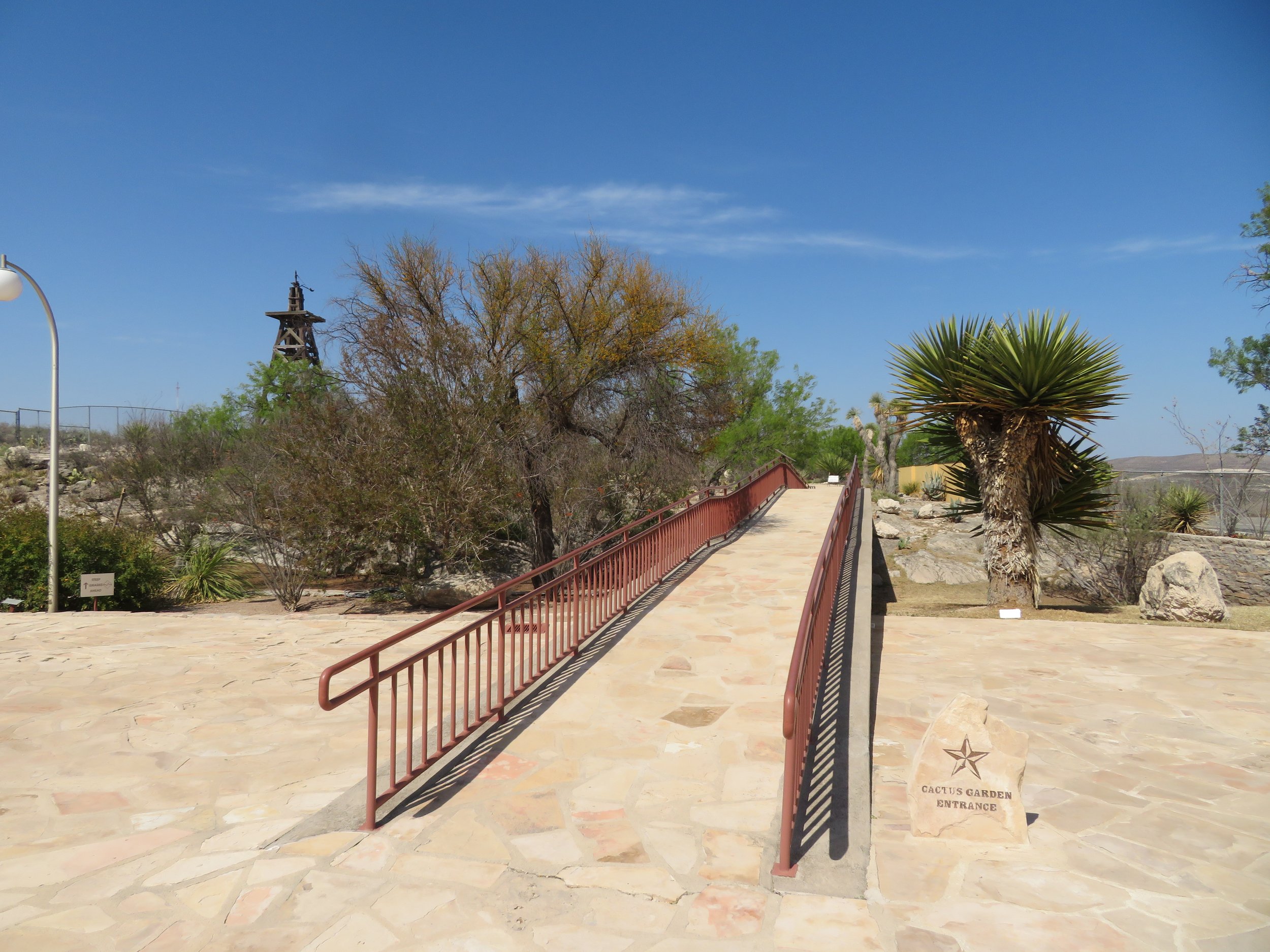Langtry, Texas and the Law West of the Pecos
/When we saw the sign for the Judge Roy Bean Museum, we just had to stop.
Remember that 1972 Paul Newman classic, “The Life and Times of Judge Roy Bean”?
Turns out, the Texas DOT restored and maintains this historic site which also serves as a Texas Travel Info & Visitor Center. The helpful hostess provided lots of useful brochures and information, then played a dated, but interesting Roy Bean video for us . We roamed around the visitor center checking out several dioramas and exhibits about Bean, as well as the construction of the transcontinental Southern Pacific Railroad which stretched from New Orleans to San Francisco overcoming a major obstacle crossing the nearby Pecos River Gorge.
Phantly Roy Bean, Jr. was a real life character who became a legend in his own time. Born in Kentucky c.1825, he traveled from age 16 on to Mexico, California, New Mexico and finally to Texas, leaving a trail of crimes behind him ranging from murder, to dueling (yup, dueling), to theft, to jail breakouts, to scams. He was quite the rogue and scoundrel… just the kind of guy to be appointed Justice of the Peace. With thousands of railroad workers in the area and no courts within 120 miles, Bean delivered his own brand of justice and the self-proclaimed “Law West of the Pecos”
Beans unrequited love and admiration for English actress, Lily Langtry, led him to name the town after her (though railroad officials insist it was named after one of their construction foremen.) He also named his saloon/billiard hall-cum-courtroom the Jersey Lilly after her and is noted for having written her several voluminous letters inviting her to visit and perform there.
We read several accounts of the Judge’s unconventional interpretation of the law and expedient handling of frontier justice. It was evidently not unusual for him to take off his barkeeper apron, pick a jury from the saloon patrons and hold court on the saloon porch. Since there was no jail in town, most penalties involved fines which the judge conveniently pocketed. One fellow was found dead with $41 in his pocket and a pistol in his bag. The judge concluded that a man should not be carrying a concealed weapon, especially if he was dead, and fined him $41.
We wandered through the Jersey Lilly, Bean’s second saloon on this site built after the first burned down. An itinerant painter lettered the original sign and misspelled Lily’s name which remains today.
Bean also constructed another building and named it Roy Beans Opera House, Town Hall and Seat of Justice, but it was really just his own private house. There isn’t much inside other than a bed and nightstand vintage late 19th century.
By the way, Lily Langtry did indeed finally accept the Judge’s invitation and visited Langtry in 1904, unfortunately a few months after Roy Bean had died.
Beyond the Roy Bean and railroad memorabilia, there’s quite an unexpectedly nice cactus garden and interpretive trail behind the visitor center. It seemed good to stretch and get a few steps in. The claret cup cactus was in full bloom as was the huisache tree.
Enough law and semblance of order for one day, we were back on the road again and made a quick stop at the Pecos River High Bridge Overlook. The original Pecos River Viaduct opened in 1892 was 320 feet above the Pecos River, built to improve the Southern Pacific Railroad’s route between El Paso and San Antonio.
The current Pecos River High Bridge is a steel deck truss bridge on slip-formed concrete piers ranging in height up to 275 feet, a bit more substantial than the 1892 version.
We concluded our day’s journey in Del Rio, Texas. Amistad National Recreation Area was our intended stop, but high winds and blowing sand changed our minds. We settled on a nondescript motel room and a little Netflix.
Next time, we’re sampling Texas state parks and liking them lots.















